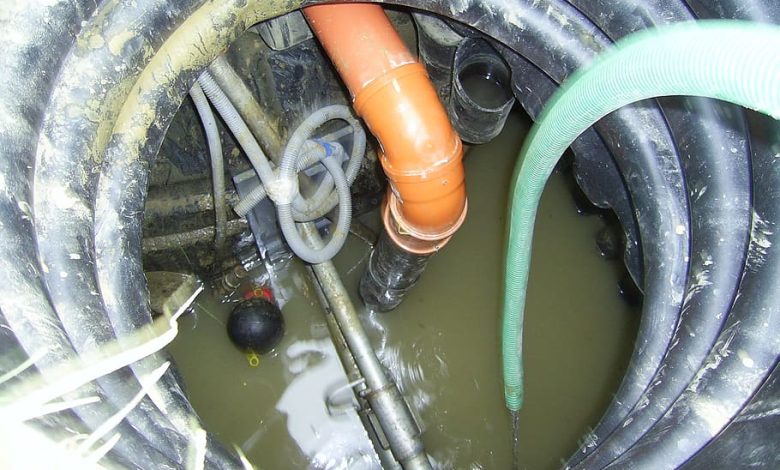What Is Drainage System For Basements? Top 7 Best Drainage System For Basements

Last Updated on February 23, 2024 by Ali Hamza
Water should not accumulate in the basement if a drainage system is in place. Different methods exist, including floor drains, French drains, and sump pumps.
When a building is constructed, a floor drain system is installed. A floor drain under the basement floor prevents water from leaking into the house by providing a permanent fixture.
Drainage System for Basements
A drainage system for a basement is essential in any building where the foundation wall or footing of a structure comes to ground level. In such situations, surface water from rain, snowmelt, and sprinkler systems seeps into the soil surrounding your structure’s foundation walls. Grading around your house allows surface water to be directed away from home and into a catch basin located far enough away that it does not collect near a window well or door threshold.
Maintaining proper grading requires good judgment and simple techniques that you can easily do yourself. A few hours spent maintaining your site will add years of life to your investment in materials and labor without costly repairs later on due to erosion damage or wet basements. Your local building department may also require you to maintain proper grading.
How do these systems work?
To answer this question, you should first know the various ways in which water enters basements. There are many minor cracks formed on walls and other parts of basements due to frequent use. These cracks allow small amounts of water to seep in slowly over time and accumulate at one spot. If left unattended, they will form puddles very fast and lead to flooding within no time.
Basement drainage systems route this water through drains so that it doesn’t cause any damage to property or even life! What would happen if you had flooding in your basement or an accumulation of stagnant water. The flooring would buckle, the walls would get damaged, and even electrical equipment housed in there might fail. It is simply not worth taking any chances with your property’s safety.
Top 7 best drainage systems for basement
1. Basement dehumidifier system
This is one of the most popular drainage solutions for basements. It works by removing moisture from the air and transferring it into the water, which gets drained out of your house. If you place these systems strategically enough throughout your basement, then you can easily ensure that all the water is removed in no time at all. The problem with this method is that if you don’t install them properly, there may be leaks left behind, which only damage things would further down the line. So care needs to be taken here, especially since this isn’t exactly a cheap thing to buy either.
2. French drain
The next option on our is French drains. They are very similar to dehumidifiers in the sense that they use the same technology. The only difference is that these systems are built into some tank or drain pipe installed at any height you like. They are instrumental if there is only an occasional basement flooding problem and not all the time. But considering how expensive these drainage systems can be, it is fair to assume that perhaps installing French drains would not do much good for you if this was your primary concern.
3. Pumping system
Read more:An In-Depth Guide about Basement Sealing with Top 10 Best Methods about Basement Sealing
On the other hand, a pumping system is something which injects air pressure into each area of your basement with water being collected at one common point using a pumped collected all that water too! It does require electricity, though, so you have to be careful while installing it. But since the water is collected in one place, you don’t have to worry about it seeping into any furniture or other items stored down there either.
On paper, this would appear to be a perfect solution for basements. Still, then again, it does require a lot of effort and time from your end, so perhaps people with extremely troublesome basements that tend to flood now and then may want to use this system too.
4. Sump pump
This is an upgraded version of the final product mentioned above. It’s not just pumps that are used here but also pumps combined with filters etc. These systems effectively eliminate all kinds of basement problems, including water backup, flooding, etc. The only catch here is that you have to make sure that these systems are installed in the right places according to your needs. Otherwise, they may not work as well as expected.
5. Discharge drain
This system works by discharging the water outside of your house in some other place. This means that whatever happens in your basement will not be able to damage anything on the surface either. Things are kept extremely simple for you with discharge drains, but then again, it doesn’t solve any issues with water backup or flooding. So if this was one of your significant concerns, too, then perhaps you should look at something else instead.
6. Sewer ejector
This system uses sewer waste removal rather than air to get rid of moisture from your house. This system works on very similar principles to vacuum cleaners. They introduce air pressure at one end and then expel it using sewer waste removal somewhere else. However, a problem here is that if you install these systems in your house, they can be very dangerous for children who may not know any better and try to play around with them. So if you have young kids in the house, this solution may not be a good idea.
7. Disposable dehumidifier
This option doesn’t get rid of water from your house entirely but more so collects it instead. It’s a bag that can quickly be emptied once full of water by pulling out the plug on the bottom of the device. This option includes no installation costs, which means you can easily take it with you if you move to another house. But the major drawback is that these bags tend to become very heavy once they are filled with water. So moving them around the house may not be such an easy thing to do.
FAQs
For a typical 4” x 8’8′ basement, you’ll need around 100-150 feet of PVC pipe installed in a grid pattern across the floor at least one foot from the wall. If you have a sloped basement, the piping should go from the high point down or away from your foundation. In addition to this main drain line, you’ll also need between 1/2″ and 3/4″ pea stone placed on top of gravel underneath it so water can flow through one layer at a time without causing damage to your home’s foundation.
The difference between an interior perimeter drain system and a traditional French drain is that the water is collected inside your home rather than absorbed by soil or gravel. The first step of proper waterproofing is to install what’s known as an interior perimeter drain system that will catch water before it ever gets into your basement and divert it to a sump whole inside your house, where a pump is installed in the sump pit will push it out again.
A drainage system for the basement or crawl space aims to prevent water from collecting and saturating the soil. By channeling away the water, will help with ventilation and make it easier to keep basements dry.




